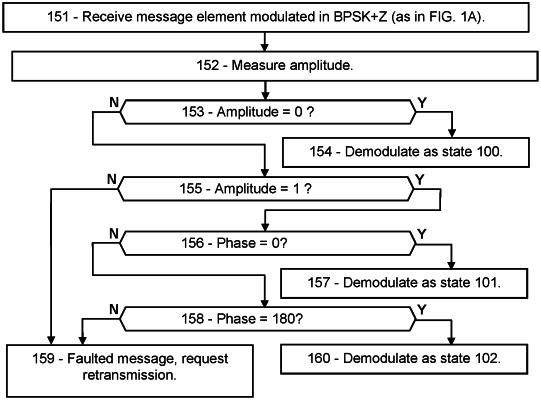| CPC H04L 27/3405 (2013.01) [H04L 1/0003 (2013.01); H04L 1/0071 (2013.01); H04L 27/20 (2013.01)] | 20 Claims |

|
1. A method for a wireless receiver to demodulate a message, the method comprising:
a) receiving a message comprising modulated message elements, each message element modulated according to a modulation scheme that comprises at least one zero-power state and at least one non-zero-power state, wherein each non-zero-power state is transmitted with at least a minimum amplitude level, and wherein each zero-power state is transmitted with at most 10% of the minimum amplitude level;
b) measuring an amplitude and a phase of each message element;
c) for each message element, determining, according to one or more predetermined amplitude levels and one or more predetermined phase levels, which particular state of the modulation scheme corresponds to the modulation of the message element; and
d) allocating, to the message element, a number or code corresponding to the particular state of the modulation scheme.
|